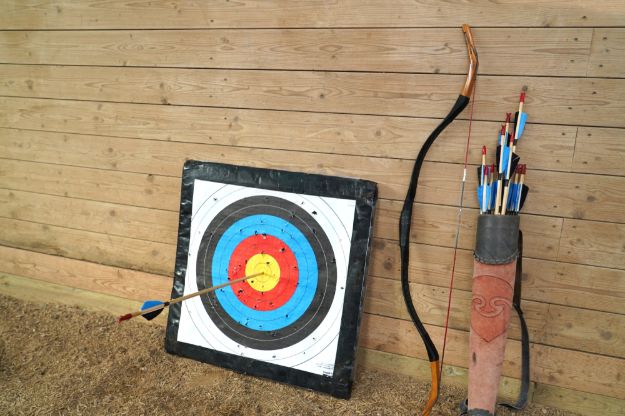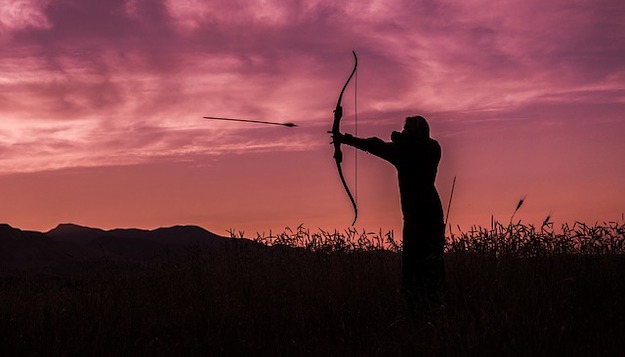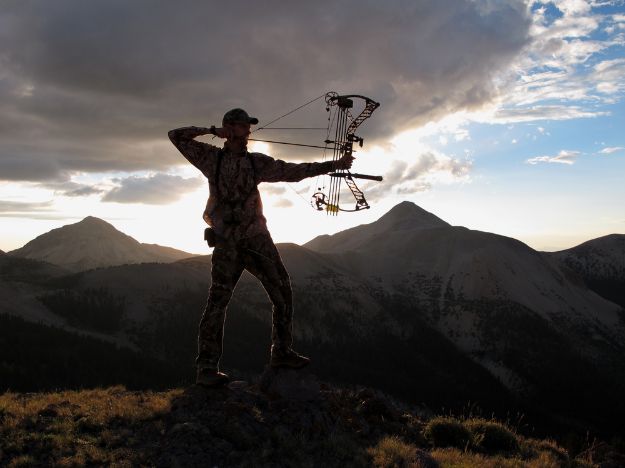Archery
Archery Facts – Things You Need To Know About Ballistics
Besides our form and technique, there are also other things that can greatly affect our shot, and this is where the science comes in. You can improve your game or the way you look at every shot if you’ll have an understanding how an arrow moves after it comes off your bow. Check out these archery facts about ballistics and the science behind this sport to improve our game.
Published
4 years agoon
By
Jeffrey Buck
You can see an archer’s passion towards the sport when he’s doing research and trying to understand the inner workings of archery. Other than practicing his shot, he also spends time trying to figure out an arrow’s flight or behavior once it is released from the bow. I am not a math major but I do understand that Physics plays a major role when we’re talking about ballistics. Everything about movement or motion is associated with physics. So check out some archery facts below and learn how it affects your shot. Knowing the science behind this awesome sport is beneficial to your improvement as an archer.
Archery Facts – Things You Need To Know About Ballistics
Momentum, inertia, force, trajectory; these are some of the words you’ll encounter when we talk about archery ballistics. Understanding an arrow flight is advantageous and it can definitely improve your game. As complicated as it may sound, learning how an arrow behaves after leaving the bow will give you an idea how you will make a shot. There are factors affecting our shot that we might have control of and there are some that are beyond our control. This is not the same as a bullet from shooting rifles or handguns. An arrow has a unique property and hitting your target will depend on how and when you’ll release it. Below are some archery facts that an archer needs to recognize if he wants to step up his game.
1. Arrow construction
How an arrow is made surely affects the flight. These rods are made from stiff and low-density materials such as wood, aluminum, fiberglass, or carbon fiber wrapped around an aluminum tubing. The thickness and length of an arrow can greatly influence its ballistics. The bigger the arrow, the larger the force, and the harder the arrow hits the target the further it goes in. Newton’s second law of motion is well applied in this case. Other than the weight of an arrow, the length, vane structure and shaft construction also affects its flight.
2. Cast
Cast is the arrow’s speed and distance and it all depends on how great an archer pulls the bow strings. The better the cast, the better an arrow’s speed, distance, and momentum. Again, the weight of an arrow is also responsible for its momentum and inertia. A fast shot means a large amount of force was exerted. This equates to less drop and better accuracy. The behavior of these projectiles will depend on how an archer releases his shot.
3. Archer’s paradox
According to the definition, archer’s paradox is the phenomenon in the physics behind archery. When an archer releases the arrow, the trajectory pursues a path that is different from its expected trajectory. In other words, the arrow will fly in a straight line to a certain target when it starts off pointing away from that target. The term “archer’s paradox” was first used in the mid-1930s by Dr. Robert Elmer. This is to explain or to justify that an arrow would hit the target, and from all, it should strike to the left. This is why some archers make their adjustments to the right because the arrow will fly to the left side. This paradox can be distinctly observed when using a traditional long bow.
4. Wind
Wind absolutely affects your shooting and it has always been a challenge for every archer. There are two ways how it affects an arrow’s trajectory. Headwinds or tailwinds causes the arrow to shoot high or low while on the other hand, while side winds can cause your arrow to drift away from your aiming line. When ballistics in archery is being discussed, the wind will always be highly regarded.
Check out this video from Lindybeige for more info and details about archery ballistics :
Having knowledge about archery ballistics and arrow flight can be good leverage over other archers. It might be too much for anyone, especially for just starting with the sport. There’s no need to rush in knowing all of these. The more you practice, the more you’ll realize these factors and understand how they can affect every shot you make. But like I’ve said before, a passionate archer will do anything and will figure out the ins and outs to make his game better even if it means getting a ballistic calculator.
Tell us what you think about this topic about ballistics by leaving a comment below.
Ever want to try hunting with archery? Why don’t you check out some of our articles here!
Featured Image Via timeoutadventures
You may like

How To Build A Debris Hut

Ironman Triathlon Podcast: What You Need To Know As An Aspiring Ironman

Awesome Family Camping Tips For Beginners

Hiking Safety Tips: What To Do When You Have Knee Pain On Trail? [PODCAST]

How To Craft Sharp Stone Tools To Survive The Great Outdoors

Mountain Bikers, Why You Don’t Want to Ride Like a Pro!

Hiking Boot Accessories
The Handgun Safety Test For Beginners
These Hunting Shotguns Are The Best Bang For Your Buck
11 Types of Guns That Will Keep You Alive On Doomsday
Best ATV Tires – The Top 6 Lightest Mud Tires
Arizona Hunting Laws and Regulations

The Top 5 Hunting Guns You’ll Ever Need For A Wilderness Walk-out

Hunting And Conservation Discussion | Call Of The Outdoors Podcast [LISTEN]
The Handgun Safety Test For Beginners
These Hunting Shotguns Are The Best Bang For Your Buck
11 Types of Guns That Will Keep You Alive On Doomsday
Best ATV Tires – The Top 6 Lightest Mud Tires
Arizona Hunting Laws and Regulations

The Top 5 Hunting Guns You’ll Ever Need For A Wilderness Walk-out










